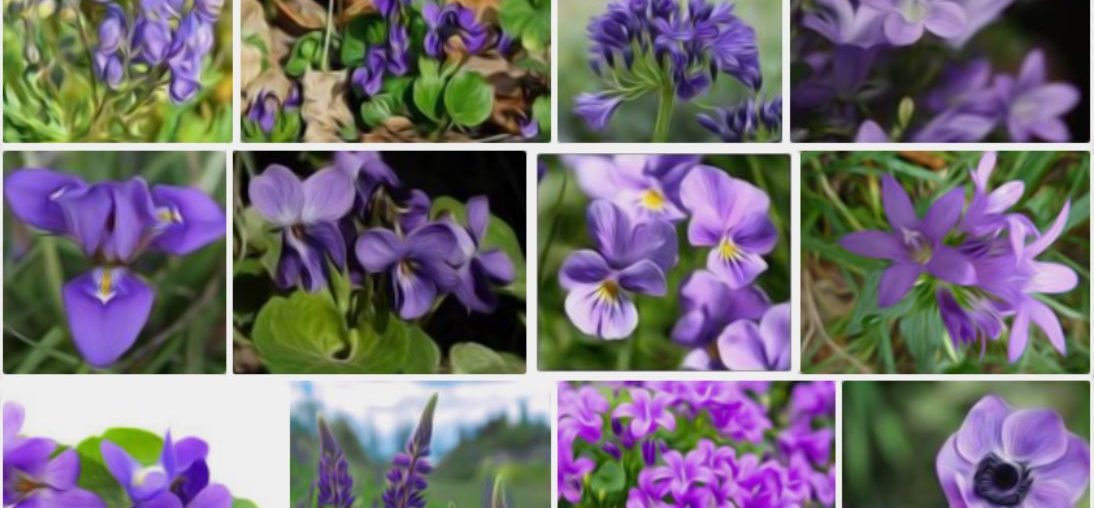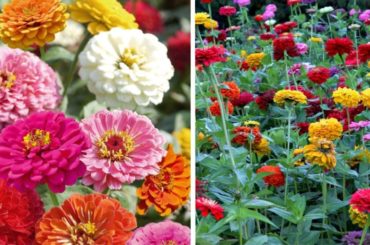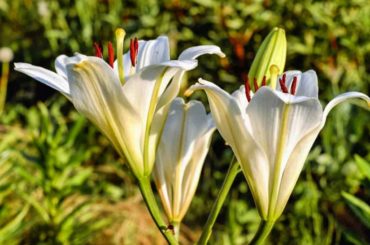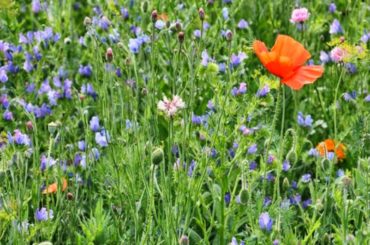The agapanthus

Agapanthus is a small purple flower with a height of between 60 and 75 cm, of which the Peter Pan variety does not exceed 40 cm. It presents flowers in bells that have a color of light blue to violet blue. Its foliage is persistent and its flowers arranged in umbels appear from the end of June or July. They are perfectly drought resistant and preferably live in mild climates for some varieties such as Midnight Blue.
The allium

Allium is part of the purple spring flowers that appear in May. Flower umbels measure between 8 and 10 cm in diameter. They are composed by hundreds of flowers of a dark purple hue, perched at the top of the stem which measures between 80 cm and 1 meter. They are perfect for borders, clumps, and they make very beautiful fresh or dry bouquets.
Callicarpa
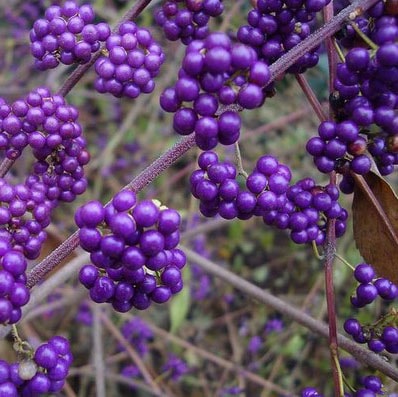
This semi-evergreen plant has green foliage in spring and summer, which turns pink in autumn. The leaves can measure up to 20 cm. Between June and August, small purple flowers appear and then they give way to pink berries. This shrub can reach 3 meters when it evolves in very good conditions. However, it must be protected in winter.
Cattleya
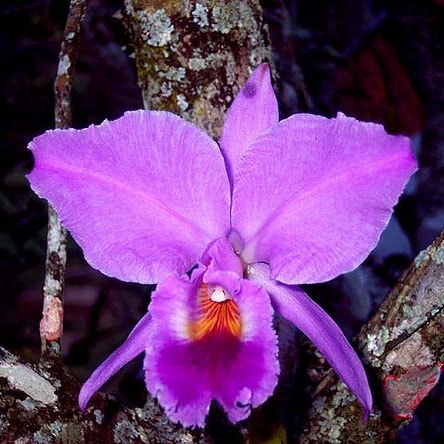
The cattleya flowers in late summer and early fall, between September and November. It has a kind of bulb of 0.12 to 0.25 m to a leaf. It is usually a light mauve shade, but it can also be yellow. He likes temperate climates probably because he is from Brazil.
knapweed
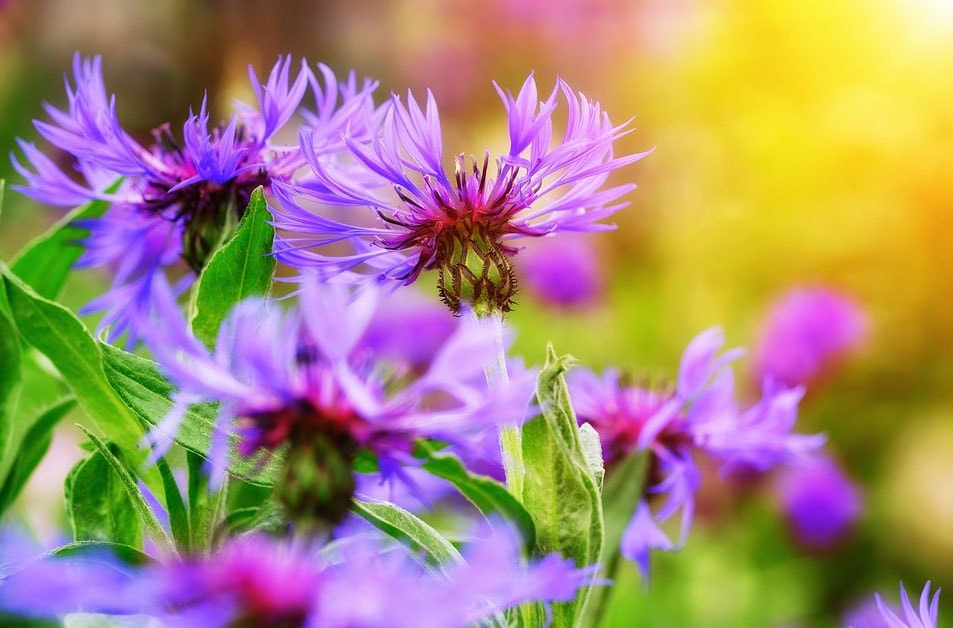
The centaury flowers from June to autumn and is appreciated both for the massifs and for making beautiful bouquets. Its large fringed flowers can have different hues, including mauve, purple, red, pink, yellow or white. It measures between 60 and 70 cm high and it reseeds spontaneously.
comfrey

The flowering period of this very pretty flower spreads during spring and summer. It has only one flaw, it tends to be a bit overwhelming. It is a perennial with deciduous foliage with a very luminous violet hue. She likes clay soils and humus. It is perfect in massive, borders, but also in planter or pot on a balcony or terrace. She loves the sun.
sundew
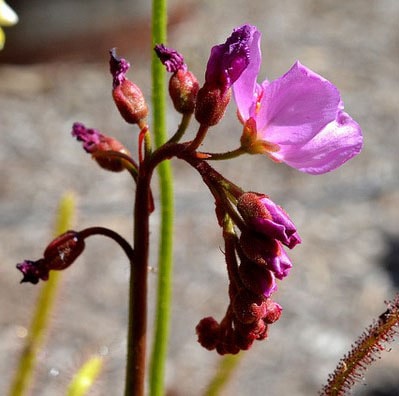
The sundew is a plant native to South Africa that is quite simple to grow. You just have to avoid the frosts. It forms pretty tufts, but the rosette tends to atrophy in winter. It flowers abundantly between May and September. Its bright purple flowers are attached to poles of 20 cm in height. They produce many seeds that you can germinate.
The climbing cobée
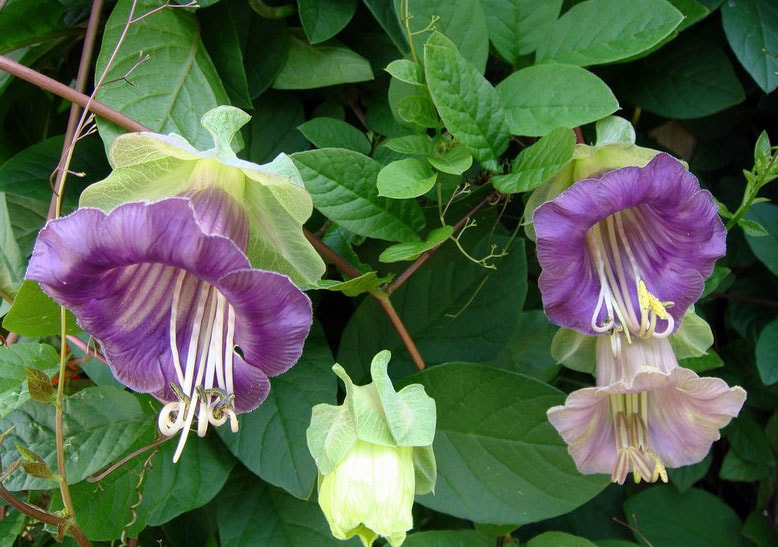
The cobée is a pretty dark purple climbing flower that adorns the walls, a patio, a fence, a facade or a pergola very easily. Its flowers are between 2 and 5 cm long, have a white tube and violet purple lobes. They appear from July to October. This hardy plant grows quite fast. She likes cool, light soils. Its foliage is persistent.
freesia
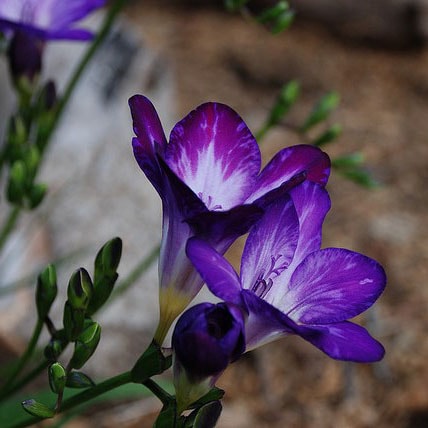
The freesia is a very decorative flower that can be double in some varieties. It flowers in April and May or from July to September and is usually between 20 and 40 cm. Freesia sold at florists is a giant variety that most of the time comes from Holland. Many hybrids have been created. This plant likes the sun or half shade and in preferably sandy soils.
Gloxinia

Gloxinia is a perennial violet flower that can grow up to 30 cm tall. Its foliage is dark green and more or less red below. This plant blooms during the two summer months and then rests for six months. Each stem carries a flower. It is very decorative and flowers abundantly. She likes shade or half shade, humus or heather earth.
Pope's Currency

The pope's currency is in the form of a tuft which has a height of 50 to 90 cm. This pretty plant with bouquets of purple flowers, scented in spring (May and June) perfectly decorates the gardens. It is cultivated like an annual, in solid or border, it appreciates the soils calcareous, sandy and stony, well drained. You will place it rather in partial shade.
The violet of the woods
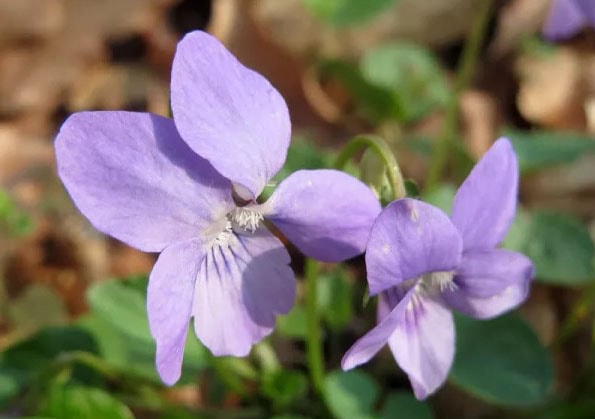
Violet is a small wild violet flower that you can easily grow in your garden. Delicate, it blooms from the end of February until the beginning of April. Because it is very hardy, it can withstand very low temperatures down to -34 ° C. The exhibition that suits him best is shadow or half shade. She likes clay or humus soils, moderately acidic or neutral.
Paulownia
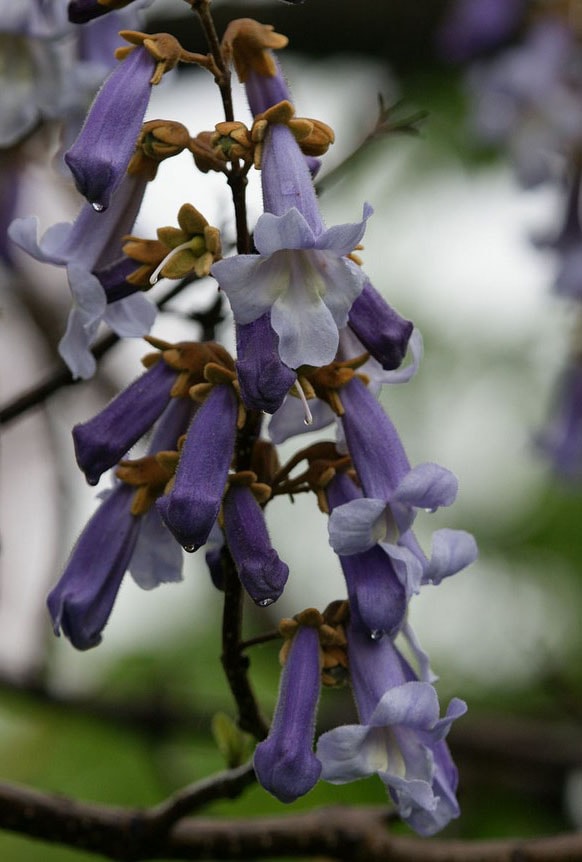
With its large, broad, heart-shaped leaves, paulownia is a deciduous tree that can reach 20 meters in height. If its foliage is very decorative, its clusters of light purple flowers are not less. They are also very fragrant. It is a very fast growing tree that comes from Korea and China. It can be planted in isolation, but also in coppice or in alignment.
The Osteospermum
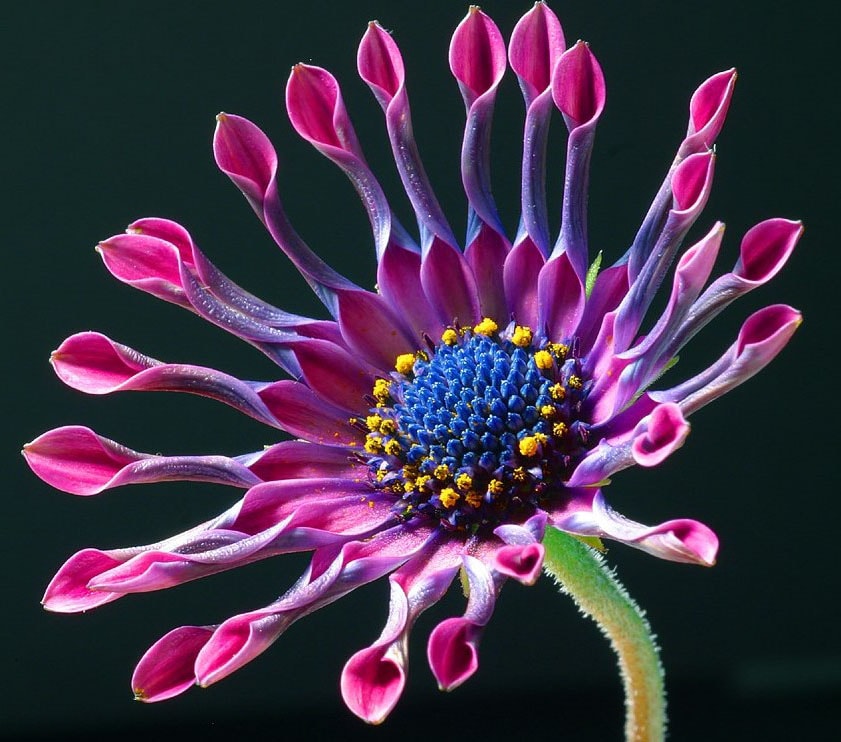 © Jon Sullivan
© Jon SullivanOsteospermum is a perennial pink and purple flower that appreciates sunny spots. It generally has a height of 20 to 60 cm and it flourishes on humus soils, well drained and sunny. It flowers between May and October, a long time when it decorates your garden. Its spatula petals are as amazing as they are decorative.
Passionflower
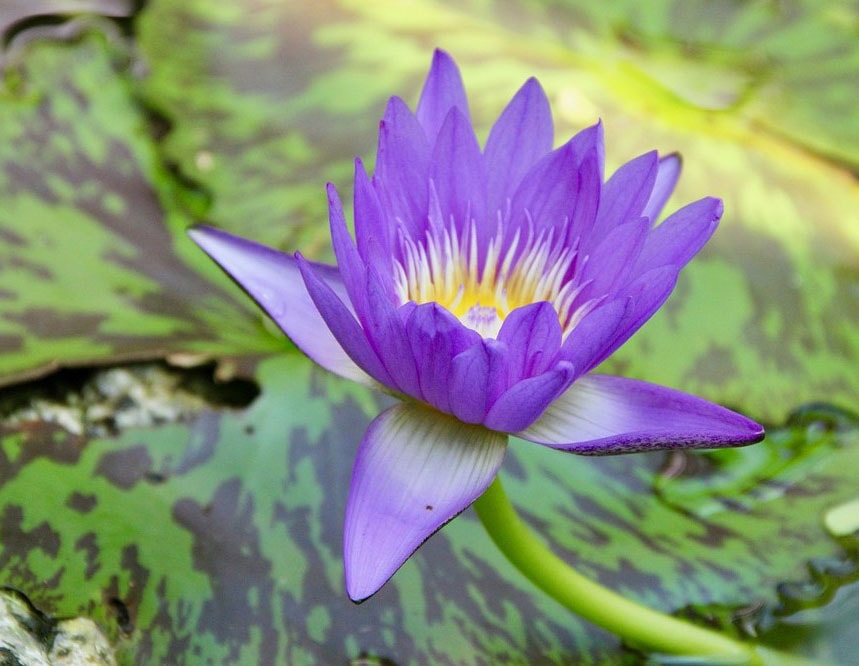
The passionflower presents flowers of a purplish blue very original. It is even more decorative that it can go up to 5 or 6 meters high. It is cultivated quite easily, it likes clay, limestone, sandy and drained soils and exposure to the sun or partial shade. It flowers from May to October when all conditions are met. It can withstand low temperatures down to -3 ° C, beyond which it will have to be protected. It can perfectly be grown in vats or pots on a balcony or terrace.
Hyssop officinale

The hyssop officinalis has flowers in ears, of a dark purple pulling slightly on the blue. They appear between July and September and they are very decorative. It is a dwarf shrub that is no longer than 60 cm and spreads over 1 meter. It is resistant to very low temperatures, down to -15 ° C. It acclimates to all types of soils, but appreciates sunny areas.
Hebe
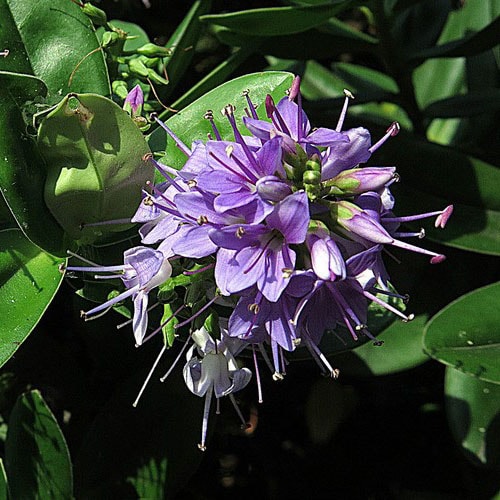
The hebe is a very decorative plant with its flowers umbels that are constantly renewed from July to October offering your garden a table of a pretty purple color. Its foliage is bushy and it has a green color above and lighter below. It is appreciated for its erect habit that can go up to 2 meters in height and the quality of its flowering.
Glycine

Glycine for most varieties blooms between April and May and sometimes June and July. Its flowers form pendulous clusters of 15 to 30 cm. It is a growing plant in summer, it enjoys exposure to the sun and it adapts to all types of soil. It is easy to maintain and can withstand negative temperatures as long as they do not drop below -15 ° C. Its flowers are fragrant and shrubs can climb up to 20 meters in height.
Crocus
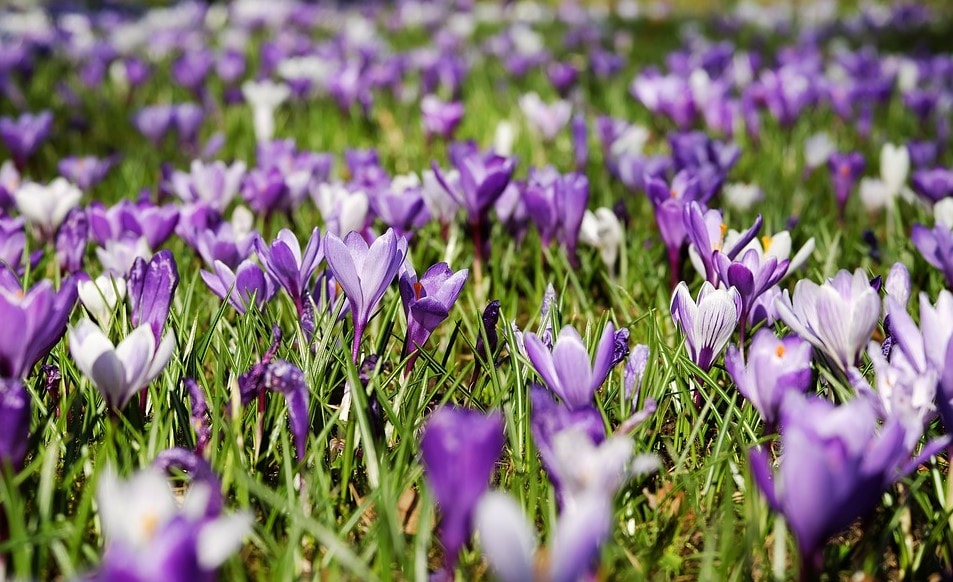
Crocus flowers from March to April. Its large flowers are fragrant and it comes in many varieties and in different colors: purple, white, yellow … It likes the drained soil, neutral, limestone or stony. He likes the sun in partial shade. It can make nice beds or borders, but it is also grown in pots or planters on your bacon or terrace. It is very easy to maintain.
Speedwell
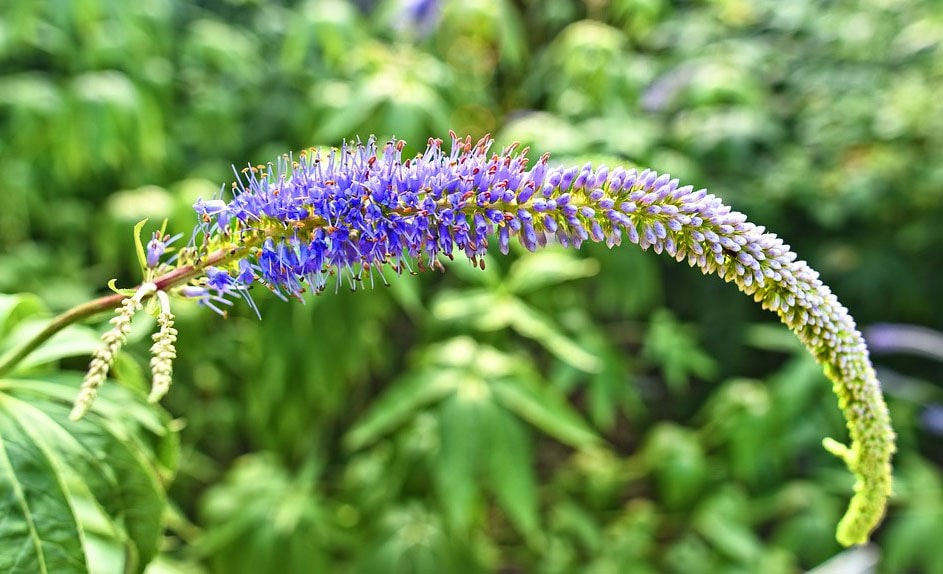
Veronica has long, thin leaves and purple flowers in spikes much like lilac. The flowers appear from May to September. It is very resistant and appreciates all the grounds, as well as the exposure to the sun or partial shade. It is grown in clumps, borders or in pots and jars.
Tillandsia
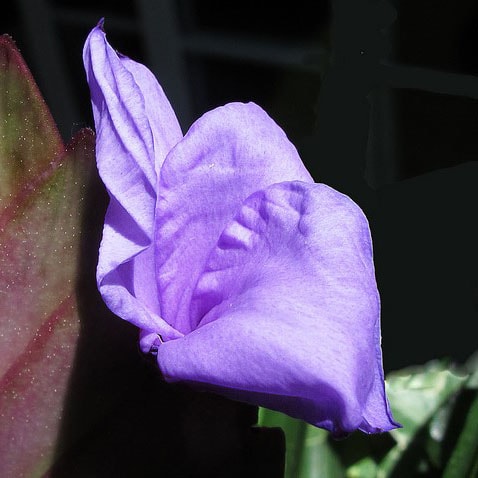
Tillandsia has purple flower stalks in the center of the rosette. Its foliage is green, but striped with brown lines underneath. Large and long flowers appear one after the other. It flowers twice a year and is easily grown in pots or planters. It is rather adapted inside or under glass.
Sophora
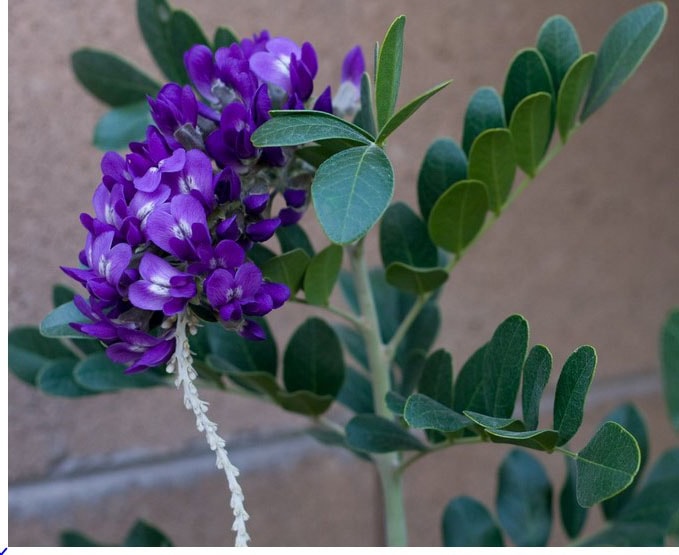
The sophora is a large shrub with very pretty violet flowers and evergreen leaves with round leaves. It evokes glycine by its aesthetics, but it recalls the perfume of the violet. It is composed of multiple trunks and can culminate between 3 and 9 meters in height. It is resistant up to -16 ° C.
Polygala
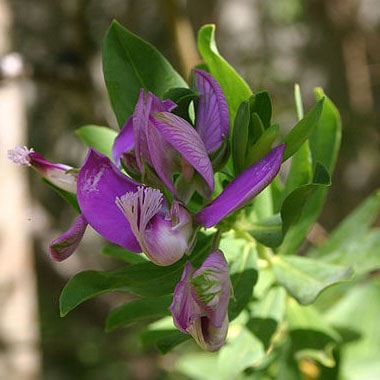
The polygala is a bush that produces pretty pretty purple flowers, between June and October, a fairly long flowering. It is less than one meter high and 1.20 meters wide. The leaves are slightly greyish green and rounded. It is resistant since it supports up to -10 ° C. It is very decorative in pot or rock.
The Platycodon
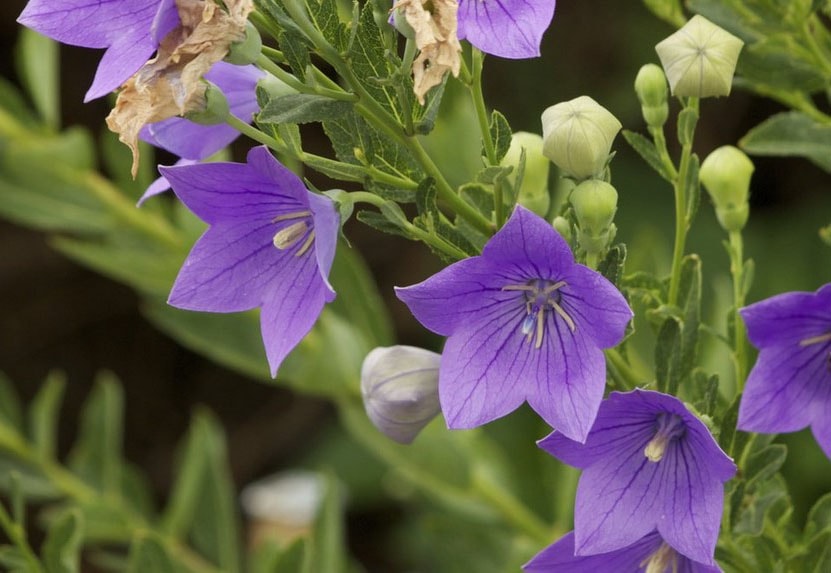
This plant can be declined in different forms in its flowers that can be single or double. They are particularly attractive in limestone, humus and sandy soils. They enjoy the sun and partial shade. They measure between 10 and 30 cm. They make pretty borders, colorful beds.
The periwinkle
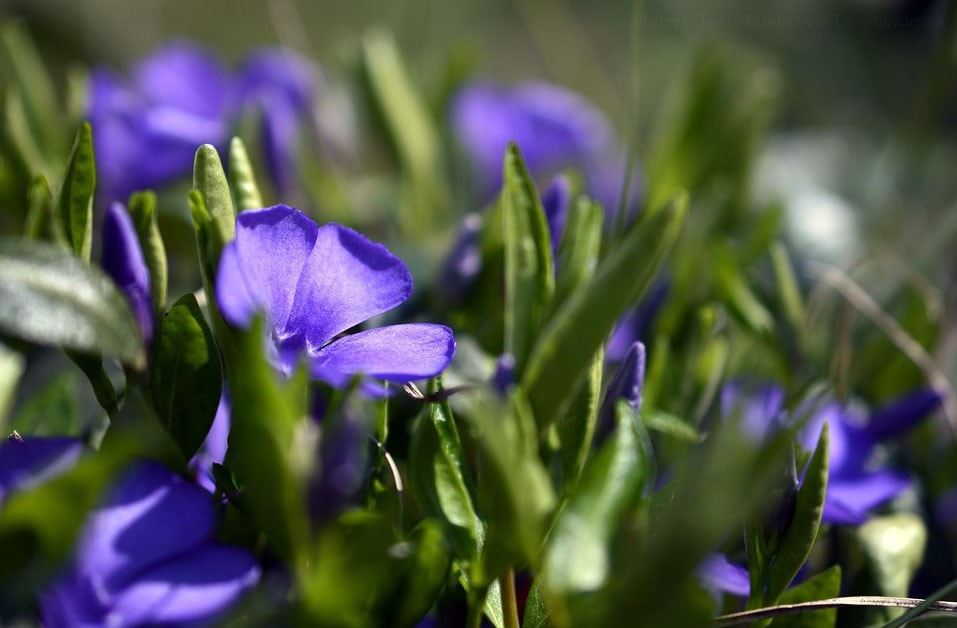
With its round green leaves and delicate violet flowers, the periwinkle is a very decorative flower in the garden. It flowers between March and May. She likes both shade and half-shade. It is very pretty carpets that can take place in any place. It requires very little maintenance and it likes humus and sandy soils.
Nepeta
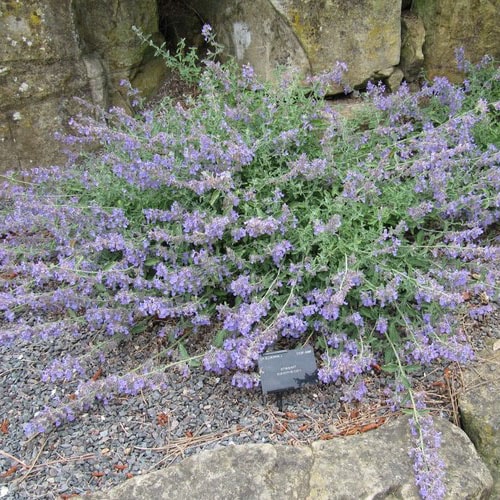 © Leonora Enking
© Leonora EnkingThese flowers have the distinction of attracting bees and bloom very long, from June to October. Its flowers are purplish blue and they are grouped in ears. They have a height of 60 cm. The stems are covered with greyish green leaves. They are ideal for beds and flowerbeds. Some varieties are a little less drought resistant.
Muscari
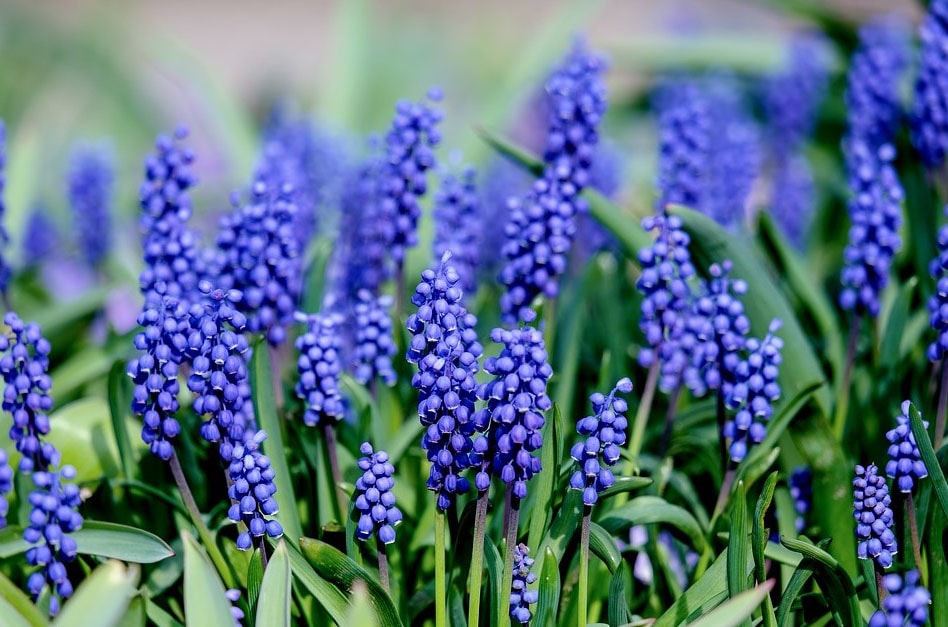
This very original and very decorative flower is present in the gardens, between March and May, to announce the arrival of spring. We like its light purple hue and fluffy appearance. She likes all the grounds, in the sunny places or half-shade. It is a flower easy to maintain and very resistant to low temperatures.
The Lilac
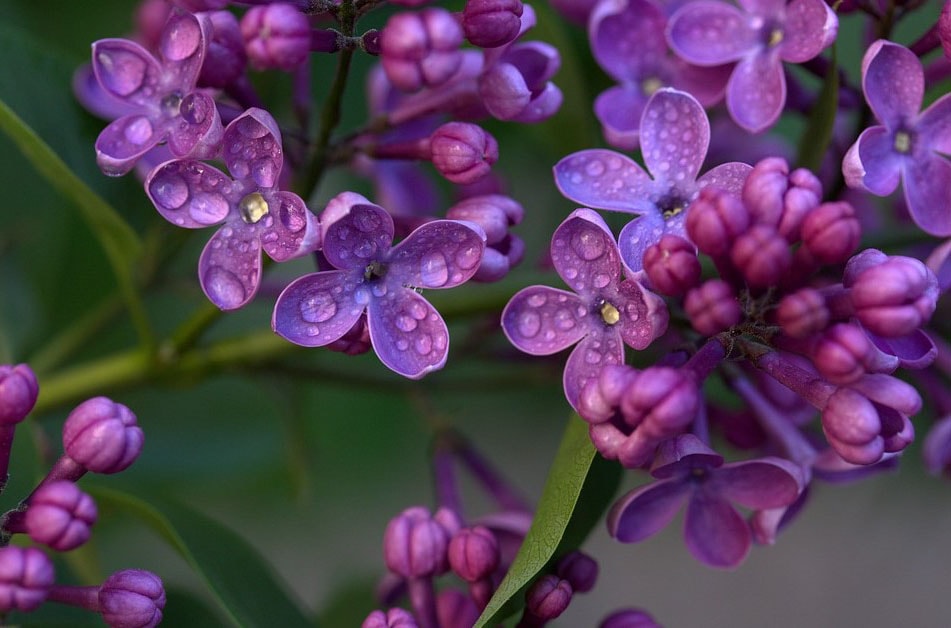
Lilac is certainly one of the most famous purple flowers. It presents different varieties, with double or single flowers. It flowers when spring arrives in April and May. These pretty fragrant bushes grow fast enough. They can be perfectly planted in free hedges, but also in an isolated way. The lilac loves the sun.
fireweed
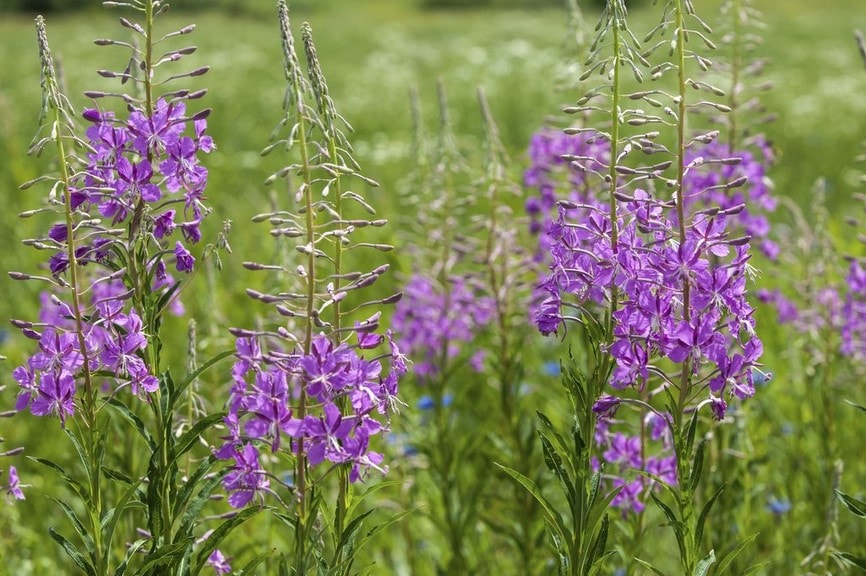
Fireweed is also called St. Anthony's herb, it gives from June to September flowers that can be purple, purple or pink. They come in the form of beautiful pointed clusters. It supports the altitude well, but in the north of France, it is found in the plain, at the edge of embankments and paths. The largest variety can exceed 2 meters high.
Erysimum

The erysum is in bloom from March to July, these can have a color ranging from pink to purple. Its leaves are evergreen and according to the varieties are variegated or green. The plant withstands low temperatures down to -15 ° C. They can be grown in beds or on the border. They are very decorative and easy to maintain. They prefer dry, drained soils.
You will like also :


